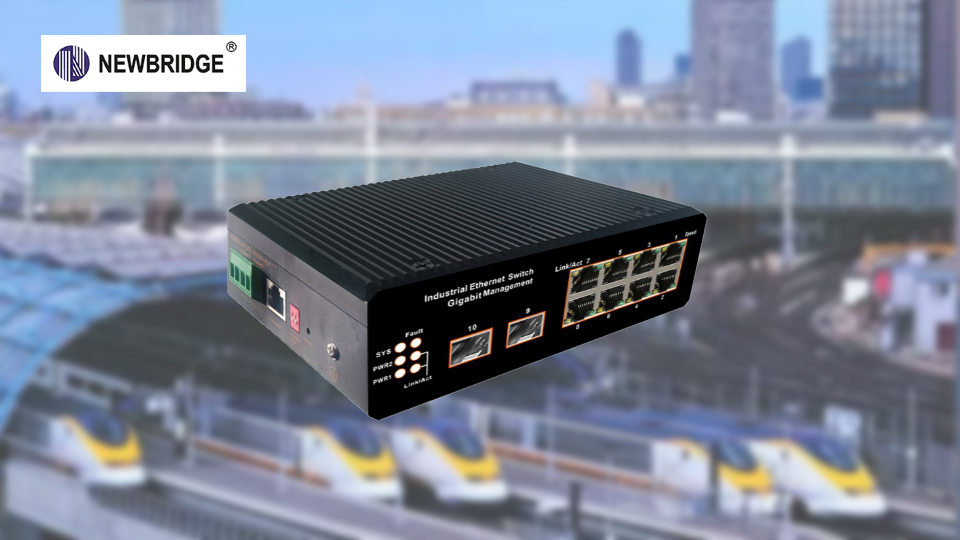Rail transit relies on industrial switches
Adapting to harsh environments:

The complex environment of rail transit, such as subway station machine rooms, can withstand challenges such as vibration, metal dust, poor ventilation, and large annual temperature ranges caused by vehicle operation. Industrial switches adopt special shell design, industrial grade materials, and anti-interference technology, which can work stably under harsh conditions such as high temperature, low temperature, humidity, dust, and strong electromagnetic interference, ensuring that network communication is not affected. For example, all components of the New H3C industrial switch are made of industrial grade products. The fanless metal casing can passively dissipate heat, and the maximum working temperature can reach 75 ℃. The IE4300 used in vehicles has achieved an IP67 protection level, which can completely prevent dust and moisture from entering.
High reliability and stability:
The rail transit system requires uninterrupted service 24/7, and industrial switches have multiple reliability designs. On the one hand, it supports network equipment and line redundancy, such as VRRP, redundant ring network and other technologies. When a device or link fails, it can automatically switch to a backup device or link, ensuring the continuity of data transmission and a long average time between failures. On the other hand, it has self diagnosis and fault alarm functions, which can timely detect and notify maintenance personnel to handle faults, reducing downtime.
Ensure data transmission:
High bandwidth and low latency:
In rail transit, train control signals, video surveillance data, passenger information systems, etc. all require real-time transmission of large amounts of data. Industrial switches adopt advanced switching technology and optimization algorithms, which can provide high bandwidth and low latency data transmission channels, meet the requirements of large data volume and real-time performance, and ensure the smooth operation of various businesses. For example, in the train control system of high-speed trains, industrial switches need to quickly and accurately transmit key information such as train speed and position to ensure the safe operation of trains.
Data accuracy: Industrial switches ensure the accuracy of data transmission and prevent data loss or errors through flow control, congestion control, and error packet retransmission technologies.
Network security protection:
Industrial switches support various network security technologies, such as virtual private networks (VPNs), firewalls, intrusion detection and defense systems (IDS/IPS), etc., which can monitor and defend against network attacks in real time, protecting the security of vehicle network communication. At the same time, it supports authentication and authorization management of vehicle communication equipment and user identity, restricts illegal access and abuse, and increases the security of the rail transit system.
Flexibility and Scalability:
The rail transit system will continue to expand and upgrade with the growth of operational needs. Industrial switches adopt modular design, supporting flexible combinations of multiple interfaces and expansion functions, and can provide customized solutions according to different needs. It also supports remote configuration and management, facilitating remote device upgrades and maintenance, and improving system manageability and maintainability.
Supporting multiple communication protocols: There are various types of devices and systems in rail transit, each with its own specific communication protocol and data format. Industrial switches support multiple industrial communication protocols, such as PROFINET, EtherCAT, etc., enabling interconnection and data sharing between different devices and systems, ensuring the coordinated operation of the entire rail transit system.
